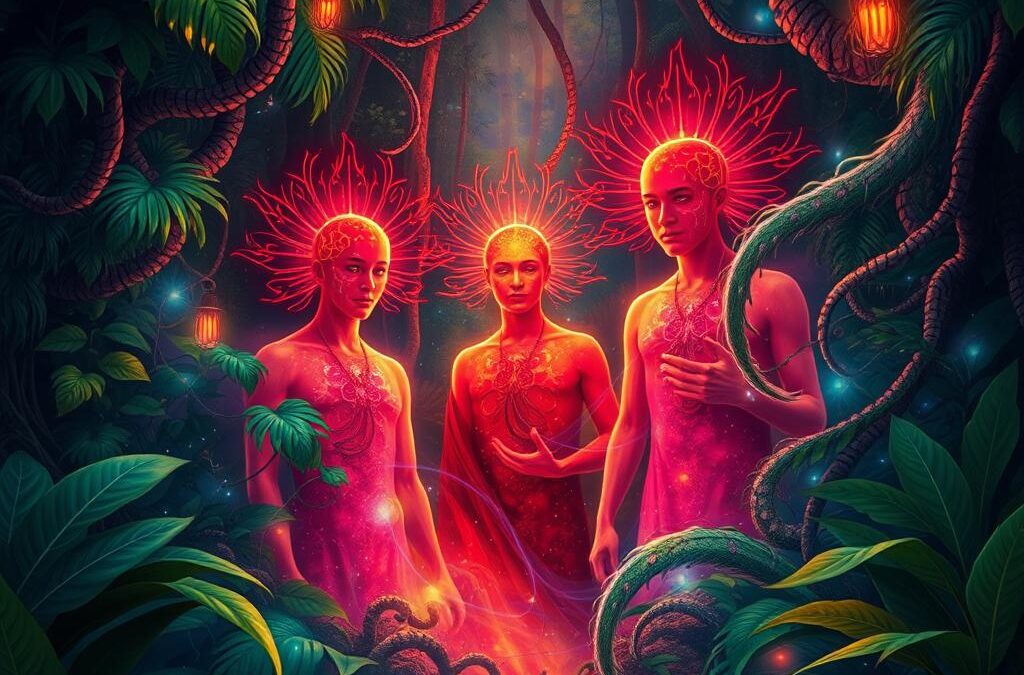Although there is no scientific evidence to support this theory, I would like to share my experience in as much detail as possible.
Since childhood, I developed a tendency to isolate myself and create my own world, a reality that was often difficult for those around me to understand. Autism Spectrum Disorder (ASD) is a developmental disorder that typically manifests in the first 2 to 3 years of life. This disorder affects the brain’s ability to develop normal social and communication skills, which can make everyday interactions challenging.
From a very early age, I noticed that my experiences were different. Making eye contact was a complicated task; I often avoided direct looks or did so inconsistently, which could give the impression that I wasn’t paying attention. I remember moments when, while other children shared their interests and emotions, I felt unable to do so. It was rare for me to point out or show objects that interested me, which made it difficult to establish connections with my peers.
As I grew older, this tendency to isolate myself intensified. I enjoyed solitude and found comfort in my internal space. Even now, at 54 years old, I still deeply value those moments of introspection. Being surrounded by many people or in large gatherings has always been a challenge for me. Crowds generate a sense of overwhelm that often leads me to seek refuge in my internal world.
My condition is quite mild and is generally almost imperceptible to those unfamiliar with autism. Only very observant individuals or those with a deep understanding of the topic can notice certain traits. I learned from a young age to hide my difficulties as best as I could, adapting my behaviors to fit into social situations. However, this adaptation was not always easy and often left me feeling very exhausted.
The world can be cruel, and unfortunately, it often judges quickly what it does not understand. The looks and comments can be painful, especially when it comes to something so personal as the way I perceive and experience life. Despite this, I continued for years seeking ways to connect with others and to understand myself better.
How Ayahuasca and Medicinal Plants Helped Me with My Mild Autism Condition
Over the years, I have explored various forms of self-knowledge and healing, and one of the most significant experiences has been my encounter with ayahuasca and other medicinal plants.
Ayahuasca, a traditional beverage of Amazonian origin, offered me a unique opportunity to delve into my inner self and confront aspects of myself that I often avoided. During the ceremonies, I experienced an expanded state of consciousness that allowed me to observe my thoughts and emotions from a new perspective. This introspective process helped me better understand my behavioral patterns, my reactions to social situations, and my emotional needs.
One of the most powerful lessons I learned was the importance of connection. Through the experience with ayahuasca, I was able to feel more connected to others and to the environment, something that had often been difficult for me. The medicine showed me that, although my way of relating may be different, it does not mean I cannot experience intimacy and love.
Additionally, I discovered that other medicinal plants, such as adaptogenic herbs and certain infusions, complemented my journey and are helping others in the world. These plants, known for their properties to reduce stress and improve overall well-being, helped me find emotional balance in my daily life. Incorporating these natural practices allowed me to better manage the anxiety and sensory overload that often accompanied my condition.
Through this combination of ayahuasca and San Pedro, as well as other medicinal plants, I have found tools that have helped me navigate the world with greater confidence and tranquility. Although I still face challenges in a moderate way, these experiences have improved my self-knowledge and contributed to a deeper sense of self-acceptance.
Now, with the experience I have accumulated over the years and as the director of the “Flower of Life Ayahuasca Healing” center in Peru, I have the opportunity to help others on their own healing journey. Each ceremony they perform allows me to witness, through the people who come into my life, the transformative power of ayahuasca. Through their stories, I can also explore my inner self and remember that we are never alone; we are often simply misunderstood. Tolerance and patience are the keys to opening the door to harmony and peace.
It is essential to note that each person is different, and what worked for me may not be suitable for everyone. It is always crucial to approach these practices with care and under the guidance of experienced professionals. However, for me, ayahuasca and medicinal plants have been allies on my path toward understanding and accepting my mild autism. I feel a deep gratitude for everything surrounding my life; even the challenges and difficulties have made this a journey of spiritual evolution filled with memorable moments.
Ayahuasca Peru Best Ayahuasca Retreats Peru Ayahuasca Iquitos Shamanic School Peru Flower of life Ayahuasca Peru Ayahuasca Healing Center
We would be delighted to welcome you to our sanctuary, where experienced shamans and facilitators will guide you through sacred ceremonies and rituals with reus at the Flower of Life Ayahuasca Healing Center for an unforgettable experience in the heart of Peru’s Amazonian Rainforest. Embrace the opportunity to reconnect with yourself, nature, and the sacred traditions of the jungle, and embark on a journey of self-discovery and empowerment. We look forward to walking this path with you and supporting you on your quest for healing and transformation.
www.floweroflifeperu.com

